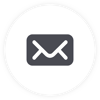In the era of COVID-19, virtual events and conferences are supporting health educators, encouraging them to keep learning and adapting to our current normal. The 2020 Career Education Colleges and Universities Virtual Convention offered an opportunity to grow from each other’s experience, as well as that of industry experts. Among the highlights, two informative panel discussions led by the CECU President and CEO Steve Gunderson explored the future of postsecondary career education and what work may look like post-pandemic.
Here are three overarching conference themes
- Stackable programs and credentials
- Strengthening school and employer relationships
- Accessibility and flexibility
Stackable Programs and Credentials
Sixty-three percent of workers report they’ll seek a new career field if they lose their job. These potential students will likely shy away from two year degree programs, with a primary objective to increase their work experience and income as quickly as possible. CECU membership institutions should leverage state and federal funding to build modular, stackable education programs that help students get hired right now, while leaving the door open for further training.
Billions of dollars in state Workforce Innovation and Opportunity Act (WIOA) funds for job training, retraining, and upskilling have been idle for a few months due to COVID. Now, there’s a surplus. Additionally, each state governor has a 25% reserve fund that can assist schools in quickly addressing local employment gaps. The Department of Education is releasing a stackable credit initiative, which will coordinate with a national ad campaign encouraging Americans to consider skills education. Further funding opportunities are available via the Perkins Collaborative Resource Network Education Stabilization Fund’s Reimagining Workforce Preparation Grant.
Strengthening School and Employer Relationships
It's critical to remain rational in response to the national crises at hand. Even after COVID-19 has finished making its mark on education, the same principles of supply and demand will apply. As institutions renovate the structure of their programs, connecting with employers within driving distance of students’ homes should be a priority.
It’s uncommon for new grads to travel more than an 18 mile radius for work. Staying plugged into the local workforce and building strong school/employer relationships meets the demands of students, and the local jobs market. Under this model, students gain a leg up in their job search, and the local economy receives a much needed boost.
Accessibility and Flexibility
As programs become online-only or a hybrid between online and in person, the demand to bridge the digital divide is higher than ever. For-profit institutions must reinvent their approach to retain and genuinely support digitally disadvantaged students. Institutions can help by making critical digital tools available to students as an affordable tuition add-on. Instructors also need laptops and webcams to be provided during the onboarding process.
According to CECU President Steve Gunderson, there is great potential for growth.
“We’re living in the biggest revolution of higher education ever. We can change who we serve, how we serve them, where we teach, how we teach, and when we teach.”
From adversity, innovation will always emerge. Health educators will rise to meet the needs of our communities now and in the future.




